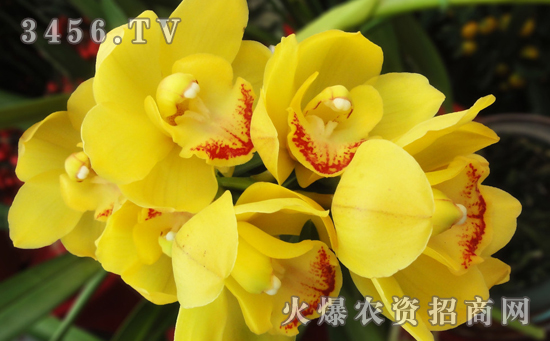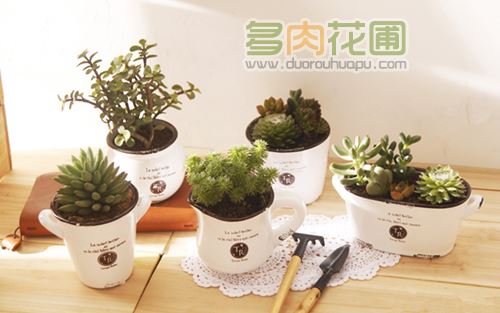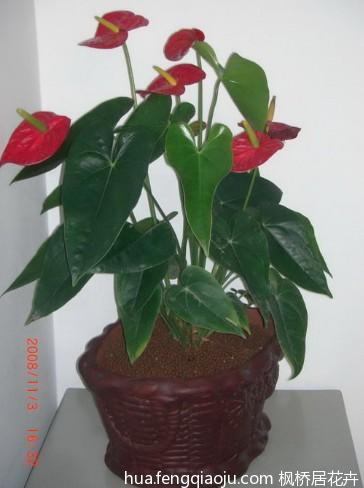Which flowers are suitable for breeding on the balcony of the Northern Dynasty?
Commonly known as Yintai, more close to the kitchen, toilet, generally used for stacking sundries, should not plant too many flowers, but should also choose the following shade-tolerant plants such as: Tianmendong, gardenia and other plants for the family icing on the cake.
In addition, some plants resistant to harmful gases such as sulfur dioxide can be selected and replaced according to different seasons, which can not only be ornamental, but also have the functions of vacuuming, anti-pollution, purifying the environment and so on. Such as eight immortal flowers, purple jasmine, marigold, four seasons begonia, honeysuckle, tortoise back bamboo and so on.
Planting grooves are arranged outside the balcony. Can plant Tianmen winter, purple duck metatarsus and other positive plants, let its green leaves slender and soft hanging down, to the balcony to form a natural "green curtain".
Culture method and maintenance of Tulip cultivated on balcony
Tulip, also known as Nelumbo nucifera and Caocha, is a plant of the genus Tulip of Liliaceae. Perennial herbaceous bulbous flowers, bulbous with brown adventitia, flowering from March to May, cup-shaped, solitary branch top, open during the day and closed in the evening. There are many varieties of horticulture, and the patterns of flowers vary from variety to variety. Originated in China Sea coast, Turkey, China and other places, like cool and humid climate and adequate light. The suitable temperature for growth is 15-25 ℃.
1. Layout
The tulips are colorful and radiant. Potted plants should choose dwarf varieties, which can be arranged in the corner of the wall or along the edge of the balcony when flowering, or can be placed on the coffee table alone.
2. Maintenance of the four seasons
(1) it is suitable to be arranged on the balcony of the east, south, west and north dynasties in autumn. Every year from late October to November (the temperature is below 9 ℃), the bulbs of tulips are selected and soaked in carbendazim or chlorothalonil solution for 30 minutes, and then planted. The basin had better use sandy loam with good drainage. As there are sufficient nutrients in the body of the bulb, the requirement for soil fertility is not high. The suitable planting depth is 3-4 cm of ball cover soil, watered thoroughly after planting, and cultured in a cold place. If tulips without low temperature treatment are planted, they should be cultured at low temperature throughout autumn and winter. In a low temperature environment, tulips only grow roots, do not sprout, and do not blossom until the temperature rises the following spring. At the initial stage of planting, it should be cultured in an environment of about 5-9 ℃ to inhibit its long leaves and promote its rooting. After the root system growth was completed (about 3 weeks), it was moved to the closed balcony, and the temperature was increased to more than 10 ℃ to let it grow leaves. The growing period after growing leaves should keep the soil moist and adequate light, but watering should not be too much. If people are moved to the high temperature environment at the initial stage of planting, the leaves grow faster and the root system develops poorly, which affects the water absorption of the root system. Due to the lack of water, the nutrients in the bulb can not be transformed and utilized in time, which will affect the growth and flowering of tulips in the later stage.
(2) it is suitable to be arranged on the balcony facing east, south and west in winter. Tulips are cold-resistant and can survive in the open field under natural conditions of about-5 ℃. If the temperature is too low, attention should be paid to cold protection, and tulips without low temperature treatment should survive the winter at low temperature. Families can put it on a 5-0 ℃ balcony with plenty of light. Tulips grow slowly in winter, so keep the soil moist and don't need too much management. Tulips that promote flowering in winter can raise the temperature after potted leaves and blossom during the Spring Festival. Keeping it in a cool place after flowering helps to prolong the flowering period. The tulips cultivated in promoting flower cultivation have no cultivation value after failure and can be abandoned.
(3) it is suitable to be arranged on the balcony of the east, south and west in spring. Tulips without low temperature treatment begin to grow after the temperature rises in spring and the soil should be kept moist. When the temperature rose to 8: 10 ℃, the buds began to be unearthed, and the buds were fertilized once at budding. If you need to keep seeds, pay attention to the management of water and fertilizer after flowering, which is beneficial to the increase of underground corms; if you do not need to leave seeds, you can abandon the flowers after failure. At the beginning of June, after the aboveground stem of the remaining tulip is dead, the underground bulb can be dug up and stored in a ventilated shady place with a net bag after drying.
(4) dormancy in summer. It should be noted that the initial temperature of dry storage should be about 20 ℃, and the newly dug tulip balls should not be stored in a low-temperature refrigerator.
3. Flowering pruning
The tulips with withered and yellow leaves were removed from the basin, and the big balls were placed at 34 ℃ for 1 week, then stored at 20 ℃ for 1 month, then transferred and stored at 17 ℃ for 1 week and 2 weeks, and then refrigerated at 9 ℃ for planting (called 9 ℃ balls). It can also be refrigerated for 3 weeks at 13: 15 ℃ and then planted at 2: 5 ℃ for 6 weeks (called 5 ℃ balls). The treated 5 ℃ balls can bloom about 2 months after planting, and the florescence of 9 ℃ balls is a little later.
How to raise Cymbidium in potted balcony and the management method of potted Cymbidium in balcony
Cymbidium grandiflorum has delicate and beautiful flowers, elegant color and fragrance, so it is one of the common indoor flowers and plants, so Cymbidium is very popular among people, so there are naturally many people who breed it, so how to raise it when potted on the balcony? The following is to introduce the management methods of potted Cymbidium on the balcony.

1. Balcony layout
Cymbidium has both the elegance of national orchid and the color of foreign orchid, so it is a popular and best-selling flower in the world. Its flower posture is rough, the color is bright, the flower shape is neat and firm, and it lasts for a long time, so it is more suitable for family decoration. When flowering can be arranged on the balcony with light, can also be arranged with the bright light of the balcony.
2. Management methods of potted Cymbidium in balcony.
(1) Spring is suitable to be arranged on the balcony facing east, south and west. Change the basin from April to May. The potted soil is generally crushed with pine bark to the size of 1cm to 1.5cm, steamed off the oil and mixed with a small amount of peat as the cultivation substrate (sold by horticultural companies). The cultivation should not be too shallow, nor should the false bulb head be buried in the soil.
You should pay attention to shading after changing the basin. In spring, Huilan can be cultivated in a sunny place. When the outdoor temperature is stable above 15 ℃, it can be moved to outdoor culture. Spring is the peak growing season for Huilan, which is watered once a day. Tap water must be placed in an open container for 3-5 days. Fertilizer application depends on its size: high potassium fertilizer is needed in small and medium seedling stage, and high phosphate fertilizer is needed in medium and large seedling stage. Ordovician long-acting granule fertilizer with high potassium or high phosphorus formula can be applied according to the need (available in flower market).
(2) it is suitable to be arranged on the balcony of the east and north in summer. Huilan is not resistant to high temperature and likes a cool climate. Direct sunlight can burn leaves and can be cultivated on the north balcony in summer. When the weather is hot, water should be sprayed on the ground and plants around the plant to increase air humidity, while maintaining good ventilation to lower the temperature.
(3) it is suitable to be arranged on the balcony facing east, south and west in autumn. The temperature is suitable in autumn, and Huilan grows better. The light can be increased gradually in autumn and should be cultured under full light in late autumn. Pay attention to the management of water and fertilizer. The temperature difference of more than 10 ℃ between day and night is beneficial to the growth and flower bud differentiation of Huilan. A certain temperature difference environment should be created as far as possible during cultivation.
(4) it is suitable to be arranged on the balcony facing east, south and west in winter. Winter is the season for Huilan to blossom (from January to March). Huilan is not cold-resistant, so we should pay attention to it in winter. If the temperature is lower than 5 ℃, the leaves will turn yellow and the flower stems will grow badly. The lowest temperature at night in winter should be about 10 ℃, it should be cultured in places with light, and attention should be paid to the management of water and fertilizer to promote the growth of flower buds.
If placed in an air-conditioned environment, you should also pay attention to replenishing the air humidity in time. Attention should be paid to controlling the temperature at night during the growth of flower buds. The temperature difference between day and night is more than 10 ℃, which is beneficial to extraction and flowering. It is best to control the temperature at 10 ℃ at night and 25 ℃ during the day. The night temperature should not be lower than 10 ℃ or higher than 15 ℃, otherwise the flower buds would suddenly elongate. If the night temperature was as high as 20 ℃, the leaves would flourish and the buds would shrink and yellowed due to lack of nutrition.
- Prev

What kind of flowers are suitable for breeding on the east-west balcony?
The varieties of winter and spring flowers that ① places on the balcony railings are: Milan, wax plum, tulips, orchids, daisies and so on. Summer flowers are: Dragon claw flower, evening fragrant jade, hanging bamboo plum, Michelia, hibiscus, canna, Zhu Dinghong, white orchid, day lily and so on.
- Next

What kind of flowers are suitable for growing in the family?
Indoor due to the lack of sunlight, it is appropriate to choose shade-tolerant, foliage-based plants, such as hanging orchid, asparagus, Phoenix tail bamboo, tortoise back bamboo, rubber tree, pearl orchid and so on. Foliage plants are mainly tropical plants, so they should be maintained indoors in winter, pay attention to heat preservation and control watering, and can be placed on the windowsill in summer.
Related
- Fuxing push coffee new agricultural production and marketing class: lack of small-scale processing plants
- Jujube rice field leisure farm deep ploughing Yilan for five years to create a space for organic food and play
- Nongyu Farm-A trial of organic papaya for brave women with advanced technology
- Four points for attention in the prevention and control of diseases and insect pests of edible fungi
- How to add nutrient solution to Edible Fungi
- Is there any good way to control edible fungus mites?
- Open Inoculation Technology of Edible Fungi
- Is there any clever way to use fertilizer for edible fungus in winter?
- What agents are used to kill the pathogens of edible fungi in the mushroom shed?
- Rapid drying of Edible Fungi

